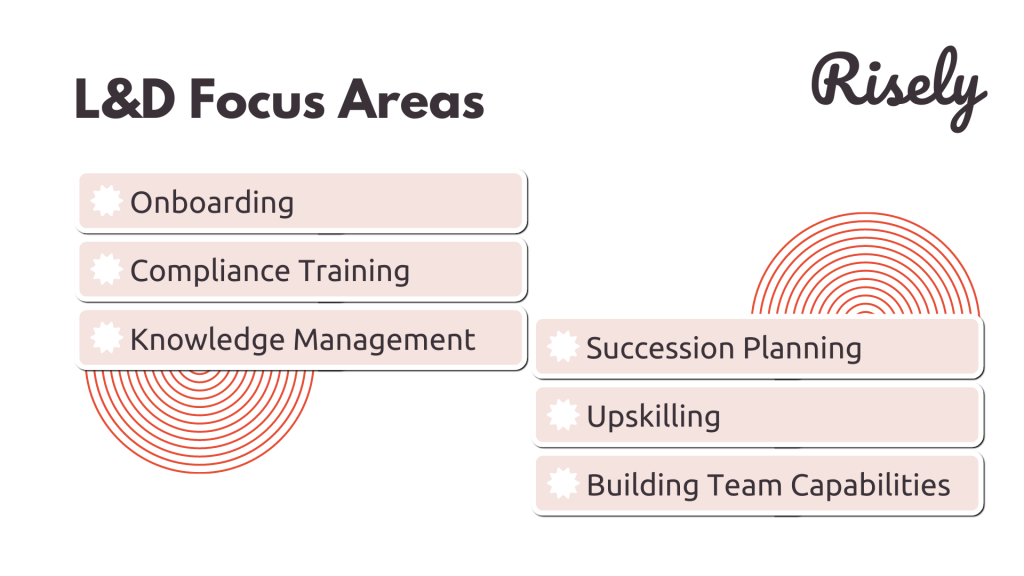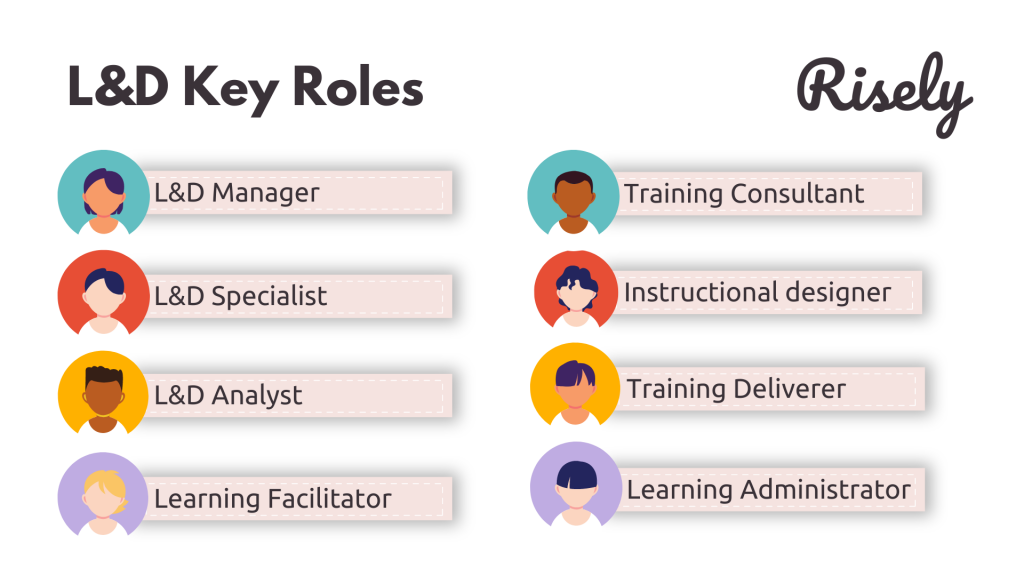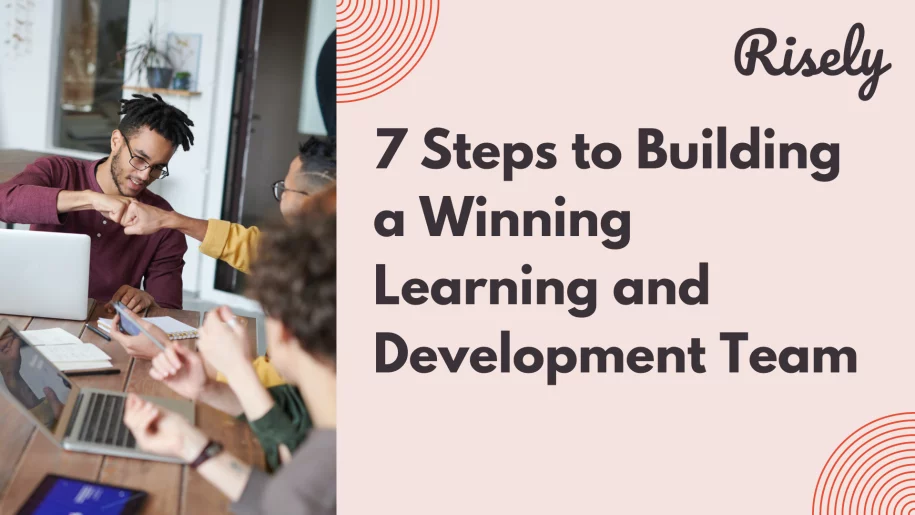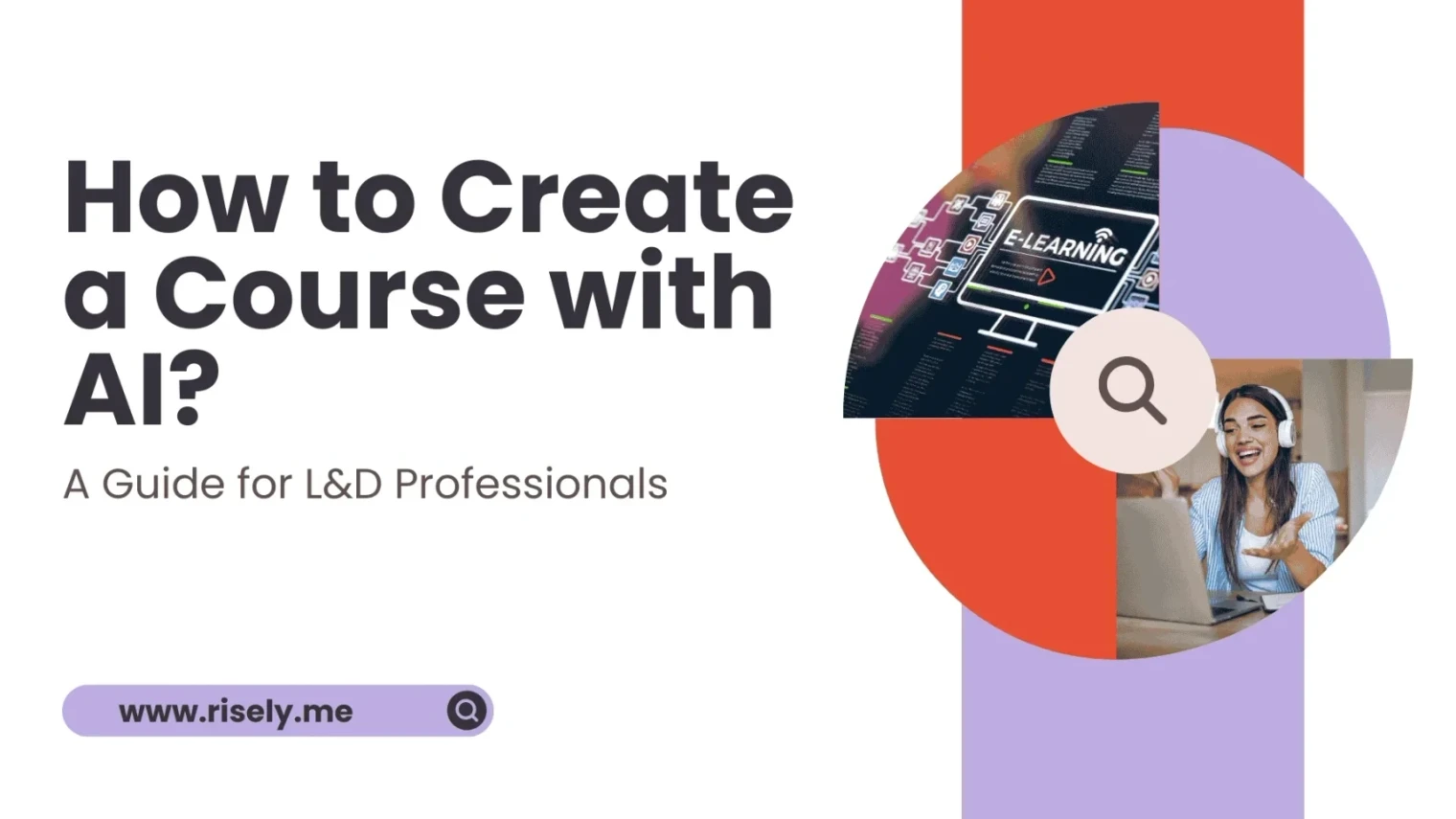7 Steps to Building a Winning Learning and Development Team
Are you looking to build a winning learning and development team? A strong L&D team can have a significant impact on the success of your organization. The benefits are endless, from creating a positive workplace culture to improving employee retention and engagement. In this blog, we will take you through the steps of building a winning L&D team and provide insights into what a learning and development team does. We will also discuss the difference between L&D and HR, the purpose of a learning and development strategy, and the critical components of a successful system. Additionally, we will showcase examples of companies with successful L&D strategies and explore why learning and development are so crucial in today’s competitive business landscape. Whether starting from scratch or looking to enhance your existing L&D efforts, this blog has got you covered. Let’s dive in!- 7 Steps to Building a Winning Learning and Development Team
- What does a Learning & Development team do?
- 6 Ways L&D Impacts The Workplace
- L&D vs. HR: What’s The Difference?
- A Framework for Learning and Development Team & Strategy
- Examples of Companies with Successful Learning and Development Strategies
- Learning and Development Teams – Building Blocks
- Who is Responsible for L&D?
- Conclusion
- L&D Team FAQs
- Other Related Blogs
What does a Learning & Development team do?
A learning and development team is responsible for creating and implementing programs and initiatives that support the growth and development of employees within an organization. They work to enhance employee skills, knowledge, and capabilities through various training and development activities. Some key responsibilities of a learning and development team include:- Identifying learning needs: The team assesses employees’ skills gaps and learning needs through surveys, performance evaluations, and manager feedback.
- Designing training programs: Based on the identified needs, the team develops or selects appropriate training materials, courses, workshops, or online modules to address those needs.
- Delivering training: They organize and facilitate training sessions, whether in-person or virtual, to provide employees with opportunities to learn new skills or improve existing ones.
- Evaluating effectiveness: The team measures the impact and effectiveness of the training programs by collecting feedback from participants and analyzing performance improvements.
- Providing ongoing support: They offer continuous support to employees by providing resources, coaching, mentoring, or additional learning opportunities.

6 Ways L&D Impacts The Workplace
A successful learning and development team, also known as L&D, has a significant impact on the workplace in various ways:- Investing in the growth and development of team members is crucial for long-term employee retention. They improve employee performance and productivity by providing targeted training and development opportunities.
- They play a crucial role in increasing employee engagement and retention by fostering a culture of continuous learning and professional development.
- L&D teams enhance the skills and knowledge of employees, align their development with organizational goals, and create a learning culture that promotes lifelong learning.
- L&D teams also contribute to improved succession planning, talent management, and overall organizational success.
- A robust learning and development (L&D) team is crucial in fostering culture. The L&D team contributes to employee engagement, a positive brand reputation, and cohesion by creating a learning environment and promoting professional growth.
- Effective L&D initiatives, including mentorship and online courses, demonstrate a commitment to lifelong learning, driving employee engagement. The L&D team’s strategies, incorporating best practices and leveraging social knowledge, foster employee development, long-term success, and a more robust bottom line.

L&D vs. HR: What’s The Difference?
L&D (Learning and Development) and HR (Human Resources) are distinct but related organizational functions. While they both play essential roles in supporting the development and well-being of employees, there are some critical differences between the two. HR primarily focuses on managing the workforce and ensuring employment laws and regulations compliance. HR professionals handle tasks such as recruiting, hiring, and onboarding new employees, managing employee benefits and compensation, handling employee relations issues, and ensuring legal compliance. On the other hand, L&D is more specifically focused on employees’ learning and development needs. L&D professionals are responsible for designing, implementing, and evaluating training programs that help employees acquire new skills, knowledge, and competencies. They may also be involved in career development initiatives, goal setting for performance management processes, and succession planning. In summary, while HR has a broader organizational focus on managing the workforce, L&D specializes in designing and delivering learning initiatives to enhance employee capabilities. Both functions foster a positive work environment and support employee growth and development.How Does Company Size Affect L&D?
The size of a company can influence the resources allocated to L&D. Larger companies often have more budget and personnel for employee development. In contrast, smaller companies may have limited resources but can still prioritize L&D. They may need to look for the most cost-effective learning solutions that allow them access to expertise but do not burn holes in their pockets. However, it’s crucial to align the L&D strategy with the specific needs and goals of the company, regardless of its size.Other Interesting Reads
A Framework for Learning and Development Team & Strategy
To build a winning learning and development team, follow this comprehensive framework encompassing critical team building and strategy development. Organizations can leverage best practices and industry insights to create a solid foundation for their learning and development initiatives, ensuring long-term success.Alignment with business strategy
Building a winning learning and development team requires alignment with the business strategy, ensuring that the team’s goals and processes support the organization’s objectives. L&D managers can build a team that drives growth by identifying critical skills and expertise, such as instructional design, training delivery, and talent development. Recruiting individuals passionate about learning and development enhances the team’s capabilities. Fostering collaboration and providing opportunities for professional growth create a culture of continuous improvement. Regular evaluations ensure the team’s initiatives meet organizational needs. A learning and development team can contribute to long-term success, employee engagement, and the bottom line by aligning with the business strategy. Read more: How To Align Goals? Understand With The effective Goal Alignment StrategiesCo-ownership between business units and HR
Co-ownership between business units and HR is vital for the success of the learning and development team. This collaborative approach fosters shared responsibility and accountability, leading to practical outcomes. Business units actively contribute by identifying learning needs and establishing goals, while HR brings expertise in instructional design and talent development. With a strong partnership, the team aligns with the organization’s strategic objectives and customizes learning programs for each business unit. Seamless communication, collaboration, and feedback drive continuous improvement and ensure that the team’s efforts significantly impact the organization’s growth and success.Assessment of capability gaps and estimated value
Identifying and addressing capability gaps is critical to building a successful learning and development team. By assessing the skills and knowledge of your team members, you can identify areas for improvement and determine the value that closing these gaps will bring to your organization. This assessment allows you to align your team’s development programs with the overall business strategy, ensuring that the L&D initiatives directly contribute to achieving key performance indicators. Assessing capability gaps also helps set realistic training goals and identify the resources necessary to bridge the gaps, such as mentorship or online courses. Focusing on continuous learning and development enables your team members to acquire new skills and competencies, enhancing their career development and improving your organization’s overall performance. Read more: Unrealistic Goals vs. Stretch Goals: The Fine LineDesign of learning journeys
The design of learning journeys, also known as the development programs, plays a crucial role in creating a well-structured and seamless learning experience for employees. It involves identifying the competencies, skills, and knowledge that must be developed to achieve the desired outcomes. Through this process, the L&D professionals select the most effective way of imparting knowledge, such as online courses, mentorship, or social learning platforms like LinkedIn. Regular evaluation and feedback are integrated into the design phase to ensure continuous improvement and alignment with training goals. This step is vital for nurturing a culture of constant learning and development within the organization. Read more: How to Create Strong Individual Development Plans (With Examples)Execution and scale-up
In the execution and scale-up phase, the focus shifts toward implementing the strategies the learning and development (L&D) team developed. Goals and objectives are set to guide the team’s work, and regular monitoring and evaluation help track progress. Additional members or external resources might be needed as the team scales up. This phase emphasizes efficient execution and staying on the path to success. Do it better with more insights: Top 5 Learning Evaluation Models for ManagersMeasurement of impact on business performance
Effective measurement of impact on business performance is pivotal in building a successful learning and development team. The team can gauge the effectiveness of their strategies and initiatives by evaluating key performance indicators and metrics that align with the organization’s goals. This data-driven approach allows for informed decision-making, identifying areas for improvement, and optimizing their efforts. Continuous monitoring and evaluation enable the team to track progress, determine the ROI of their programs, and make necessary adjustments for long-term success. By integrating measurement into their practices, the learning and development team ensures alignment with the organization’s bottom line, stakeholders’ aspirations, and employees’ skills development needs. Effective measurement is the cornerstone of a high-performing learning and development team.Integration of L&D interventions into HR processes
Integration of Learning and Development (L&D) interventions into HR processes is vital in maximizing the impact of the L&D team’s efforts. Organizations can seamlessly integrate L&D interventions into HR processes to align workforce development strategies with the team’s overall goals. This integration creates a cohesive environment where career development and employee engagement go hand in hand. By incorporating best practices from both L&D and HR, organizations can design and implement training programs that address the specific needs of their employees. This approach fosters continuous learning and professional development, leading to a more skilled and motivated workforce. With integration, L&D initiatives become an integral part of the HR ecosystem, allowing for personalized training programs, mentorship opportunities, and a strong focus on the organization’s long-term success.Examples of Companies with Successful Learning and Development Strategies
Publix
Publix, a renowned supermarket chain, has successfully implemented best practices in workforce development and career growth. The company, widely known for its commitment to employee engagement and professional development, offers training programs focused on critical competencies and growth areas. These initiatives include leadership development, customer service training, and technical skills enhancement. Publix champions a culture of continuous learning, providing coaching and mentoring opportunities through its dedicated L&D team. Publix contributes to long-term success for individuals and the bottom line by aligning employee aspirations and training goals.Learning and Development Teams – Building Blocks
By implementing these building blocks, you can establish a high-performing L&D team that promotes employee engagement, career development, and long-term success. It is crucial to follow a strategic approach to build a successful and effective L&D team. Start by identifying the specific skills and expertise required for your team. Look for individuals with diverse backgrounds and experiences; their perspectives can add value. Promote a culture of continuous learning among team members, offering opportunities for professional development. Set clear goals and objectives that align with the organization’s overall aspirations. Foster collaboration, communication, and knowledge sharing to drive innovation.Who is Responsible for L&D?
Managing and leading an L&D team requires dedicated professionals who recognize the importance of continuous learning and development in enhancing the workforce’s skills. These influential individuals are instrumental in shaping the L&D strategy, aligning it with organizational goals, and empowering team members to reach their full potential. They facilitate career development through mentorship and training programs, promote employee engagement, and foster a culture of lifelong learning. By leveraging the most effective ways to engage learners, such as social learning and online courses, L&D professionals ensure that employees acquire new skills and competencies. Through their expertise, they contribute to the organization’s success while supporting the aspirations of employees.
L&D roles and their responsibilities
- L&D Manager: Oversees the learning and development function, sets strategies, manages resources, and ensures alignment with organizational goals.
- L&D Specialist: Provides expertise in specific areas of learning and development, such as instructional design, e-learning, or talent management.
- L&D Analyst: Analyzes workforce data, conducts research, and provides insights to guide learning and development initiatives decision-making.
- Learning Facilitator: Facilitates learning experiences, delivers training sessions, and engages learners through various instructional methods.
- Training Consultant: Advises on training needs, designs learning solutions, and collaborates with stakeholders to address organizational performance gaps.
- Instructional Designer: Designs and develops practical and engaging learning materials, courses, and curricula using instructional design principles and methodologies.
- Training Deliverer: Conducts training sessions, workshops, or presentations to deliver learning content and facilitate participant skill development.
- Learning Administrator: Manages learning programs, coordinates logistics, tracks participation, and handles administrative tasks related to learning initiatives.
Skills for L&D professionals
As an L&D (Learning and Development) manager, several vital skills can help you excel. Some of these skills include:- Training and instructional design: A strong understanding of training methodologies and instructional design principles is crucial for developing effective learning programs.
- Communication and interpersonal skills: L&D managers need to communicate effectively with employees at all levels of the organization and with external training providers or consultants.
- Project management: Planning, organizing, and managing learning initiatives is essential for ensuring that training programs are delivered on time and within budget, making project management skills essential.
- Analytical and problem-solving skills: L&D managers should be able to analyze data and identify trends or patterns to make informed decisions about training needs, therefore they need robust analytical skills.
- Technology proficiency: With the increasing use of e-learning platforms and other digital tools, L&D managers should understand technology and its application in learning environments.
- Leadership skills: As an L&D manager, you may need to lead a team of trainers or instructional designers, so strong leadership skills can help you motivate and inspire your team.
Conclusion
In conclusion, building a winning Learning and Development team is crucial for the success of your organization. A strong L&D team can create a positive workplace culture, align employees with company goals, improve retention rates, increase engagement and motivation, enhance the quality of work and performance, and strengthen your brand reputation. To build an effective L&D team, you must define clear goals and metrics, conduct an inventory of learning needs, align your strategy with business goals, and implement personalized and social learning experiences. Successful companies like Google and Publix have already implemented successful L&D strategies. Investing in your employees’ development not only benefits them but also has a positive impact on your business performance and profitability.Effective learning starts with setting the right goals.
Start the free goal-setting skill assessment for managers and leaders now to ensure you don’t make mistakes.
L&D Team FAQs
What makes a good L&D team?
A good L&D (Learning and Development) team possesses several key attributes. Firstly, they should have a deep understanding of the organization’s goals and objectives, aligning their training initiatives with the overall business strategy. They should be skilled in instructional design, training delivery, and evaluation methodologies. Effective communication, collaboration, and relationship-building skills are crucial for engaging stakeholders and learners. Additionally, staying updated with industry trends and emerging technologies ensures the team remains innovative and adaptable.
How are L&D teams structured?
The structure of L&D teams can vary depending on the size and complexity of the organization. In smaller organizations, the L&D function may be handled by a single individual or a small team responsible for all training activities. In larger organizations, the L&D team may have specialized roles such as instructional designers, trainers, learning technologists, evaluators, and administrators. Some organizations may also outsource certain aspects of training to external consultants or providers.
What does an L&D team do?
An L&D team is responsible for designing, developing, implementing, and evaluating training and development initiatives within an organization. They identify training needs, create learning materials and programs, deliver training sessions through various methods (e.g., classroom training, e-learning), assess the effectiveness of training, and provide ongoing support to learners. L&D teams also stay updated with industry trends, research best practices, and collaborate with stakeholders to ensure training aligns with organizational goals.
How do you create a L&D strategy?
To create an L&D strategy, start by conducting a thorough analysis of the organization’s current and future training needs. This includes identifying skill gaps, considering organizational goals and challenges, and understanding the target audience. Next, define clear objectives and outcomes for the L&D initiatives. Develop a comprehensive plan that includes the selection of appropriate training methods, resources, and technologies. Establish evaluation methods to measure the effectiveness of the strategy and make necessary adjustments based on feedback and results. Regularly review and update the strategy to ensure its alignment with changing business needs and learner requirements.
Other Related Blogs
How to Create a Course with AI: A Guide for L&D Professionals
How to Create a Course with AI: A Guide for L&D Professionals According to a McKinsey survey(1), only 11% of business leaders believe their leadership development initiatives yield meaningful results.…
How to build a Learning and Development Action Plan ft Katie Greenwood
How to build a Learning and Development Action Plan ft Katie Greenwood Does your company’s Learning and Development (L&D) strategy feel like more “guessing” than “winning”? You’re not the only…
Generative AI for Learning and Development: Getting Started
Generative AI for Learning and Development: Getting Started In 2024, organizations spent $401 billion globally on corporate training(1), yet 70% of employees report feeling unprepared for the future of work…
Future proofing a learning strategy for organizations with Inna Horvath
Future Proofing a Learning Strategy for Organizations with Inna Horvath With the advent of AI, everyone’s anticipating changes. L&D leaders in charge of building a learning strategy for organizations are…


